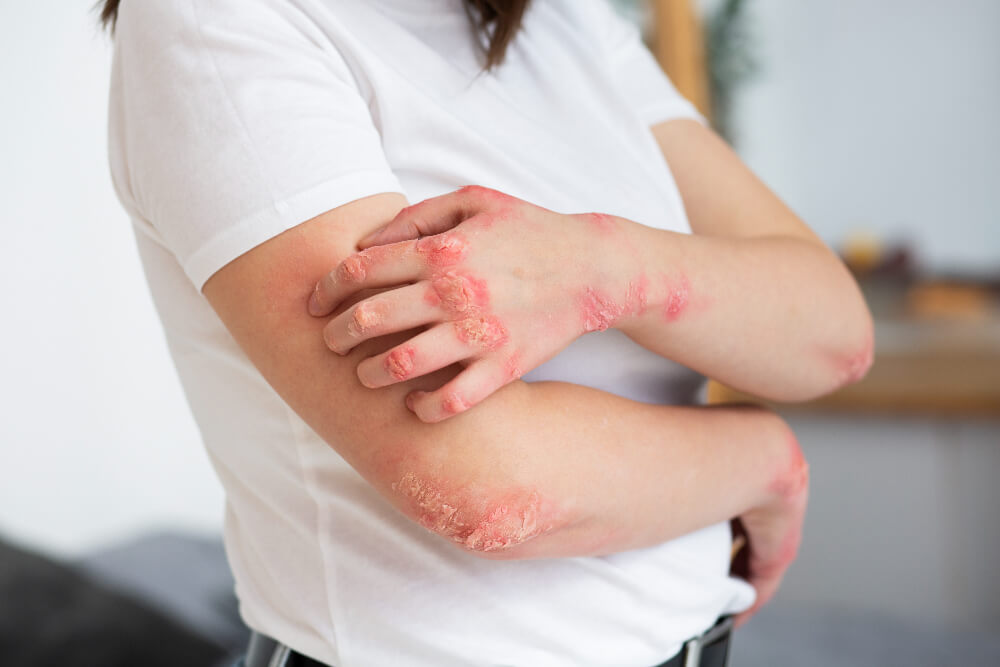Pathogenesis (Samprapti)
Fungal infections occur when:
- Kapha Dosha Imbalance: Causes excessive moisture, heaviness, and stickiness in the body or skin, which supports fungal proliferation.
- Pitta Dosha Imbalance: Leads to inflammation, burning sensation, and discoloration.
- Ama (Toxins): Improper digestion generates ama (undigested metabolic waste) that weakens immunity, allowing infections to thrive.
- Rakta Dushti (Blood Impurity): Impure or vitiated blood aggravates skin conditions.
These factors disturb the natural balance of the skin, creating fertile ground for fungal infections.
Types of Fungal Infections in Ayurveda
Fungal infections are classified based on symptoms, affected areas, and dosha involvement:
1. Kapha-Type Infections
- Moist, sticky lesions.
- Oozing and slow healing.
- g., Athlete's foot, candidiasis.
2. Pitta-Type Infections
- Red, inflamed, or burning rashes.
- Associated with heat and itching.
- g., Ringworm, intertrigo.
3. Kapha-Pitta Mixed Infections
- Swelling, pus, and foul-smelling discharge.
- Chronic or recurring infections.
4. Vata-Type Infections (Rare)
- Dry, scaly patches with itching.
- Associated with roughness and cracking skin.
Ayurvedic Perspective on Prevention
1. Boosting Immunity (Ojas)
Enhance body strength using Rasayana herbs like Ashwagandha, Guduchi, and Amalaki to improve resistance against infections.
2. Daily Regimen (Dinacharya)
- Bathing with herbal decoctions of neem or triphala for skin hygiene.
- Avoiding excessive sweating by wearing breathable clothes.
3. Seasonal Regimen (Ritucharya)
- Adjusting diet and lifestyle with seasonal changes to avoid dosha imbalances that predispose the body to fungal infections.
4. Regular Skin Care
- Avoiding synthetic soaps; instead, using herbal powders or ubtan made from neem, turmeric, and sandalwood.
Holistic Healing Approach
Ayurvedic treatment integrates physical, mental, and spiritual health to address fungal infections. This includes:
1. Yoga and Pranayama
Practices like Surya Namaskar, Kapalabhati, and Nadi Shodhana help regulate body heat, improve immunity, and balance doshas.
2. Meditation
Reduces stress, which can weaken immunity and make the body susceptible to infections.



